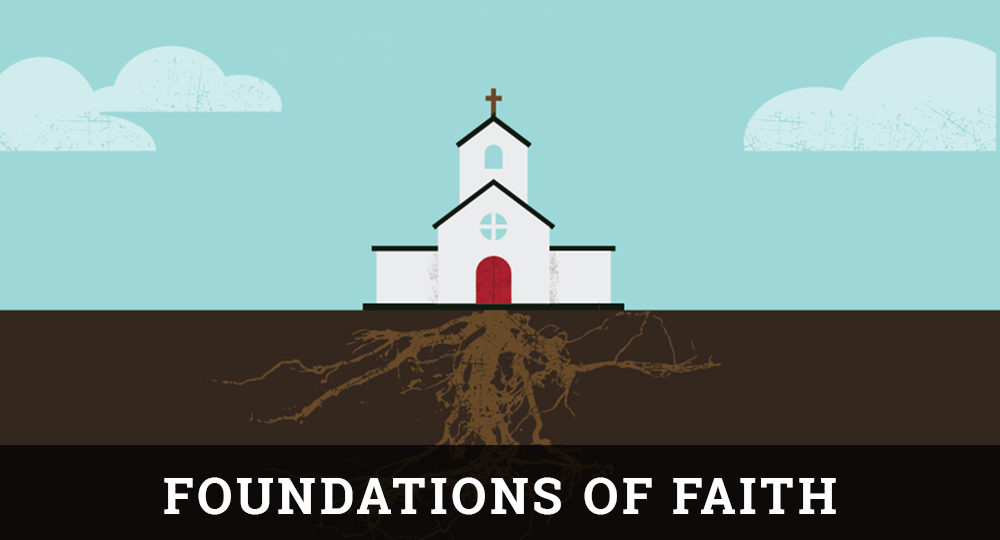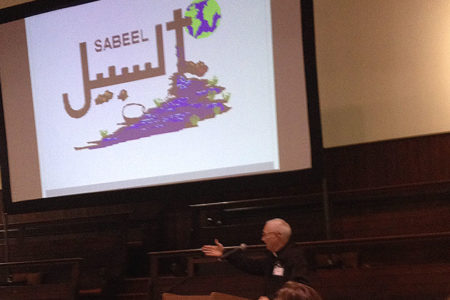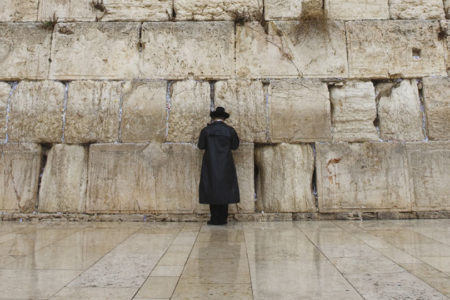The Wisdom of God Part Three
Daniel Interprets Nebuchadnezzar’s Dream
The previous article focused on the wisdom of Jesus Christ and the Holy Spirit, plus God’s distribution of wisdom to the nation of Israel; Israel’s gifted artisans; and Joseph, Joshua, Solomon, and Ezra.
This article provides more examples of God’s distribution of wisdom.
Nebuchadnezzar, the crown prince of Babylon, came to Israel’s capital city of Jerusalem in August 605 BC.1 On August 15 or 16, his father, King Nabopolassar, died in Babylon.2 Nebuchadnezzar rushed home to claim the throne and was crowned king on the day of his arrival, September 6 or 7, 605 BC.3
On his trip home, Nebuchadnezzar carried captive with him some of the sacred vessels of the Temple of God in Jerusalem and Jewish “young men in whom there was no blemish, but good-looking, gifted in all wisdom, possessing knowledge and quick to understand, who had ability to serve in the king’s palace, and whom they might teach the language and literature of the Chaldeans” (Dan. 1:4).
The young men were 15 to 20 years of age.4 The future prophet Daniel and his three companions were among the captives (vv. 1–7).
Nebuchadnezzar placed God’s sacred vessels in Esagila, the temple of Marduk, the chief Babylonian god.5 He probably did so for two reasons:
First, he wanted to express gratitude to his god for victories in battle. So he used the vessels of Israel’s God as a thank offering to Marduk.
Second, he wanted to exalt Marduk and humiliate Israel’s God by asserting that Israel’s God was subject to his god. To the pagan way of thinking, no nation could conquer another unless its god was more powerful than the god of those vanquished.
Nebuchadnezzar’s actions gave Israel’s God a splendid opportunity to demonstrate two things:
First, Israel’s God is not subject to any god. He is the Most High, the Sovereign One of the universe.
Second, it was Israel’s God, not Marduk, who gave Nebuchadnezzar his victories. Daniel 1:1–2 makes that fact clear. It states that Nebuchadnezzar came to Jerusalem and besieged it in the third year of the reign of King Jehoiakim of Judah: “And the Lord gave Jehoiakim king of Judah into his hand, with some of the articles of the house of God, which he carried into the land of Shinar to the house of his god; and he brought the articles into the treasure house of his god.” God sovereignly did this to afford opportunity for a greater display of His sovereignty.
Nebuchadnezzar commanded the chief marshal of his royal court to bring the best of the Jewish captives into the royal training school. The Jewish youths were given the best education Babylon afforded.
The training lasted for three years and was designed to prepare the young men to become officers in the king’s service. They also were assigned Babylonian names that honored Babylonian gods, probably to change them from a Jewish mindset to a Babylonian one and from loyalty to Israel’s God to loyalty to Babylon’s gods.
God enabled Daniel and his three friends to learn their subjects well. He gifted them with wisdom to distinguish true knowledge from falsehood, and to Daniel God added the gift of discernment to interpret dreams and visions from God accurately (v. 17). These abilities were crucial for the follower of God living in a land that stressed visions and dreams.
When their education was completed, all the trainees were tested before King Nebuchadnezzar. Daniel and his three friends so greatly surpassed the others in their performance that they were placed in the king’s service. They even surpassed by 10 times all the king’s experienced magicians and enchanters, not due to natural ability, but due to God’s special enablement (vv. 17–20).
Daniel’s First Test of Wisdom. In 603 BC Nebuchadnezzar had a disturbing dream. He called in most of his wise men in hopes of receiving an interpretation. As was their custom, they asked the king to tell them the dream so they could give their interpretation.
But this time Nebuchadnezzar demanded they not only interpret the dream, but also tell him what he had dreamt. He promised gifts, reward, and great honor if they could do so but said they would be cut in pieces and their homes converted into public restrooms if they failed.6 They told him no king, lord, or ruler had ever demanded their wise men perform such an impossible feat (2:1–13).
Nebuchadnezzar responded by commanding the execution of all his wise men. Although Daniel and his friends were not present at the session before the king, they were also to be executed. So Daniel went to Nebuchadnezzar and obtained time to fulfill what the king demanded (vv. 14–16).
Daniel rushed home and told his friends the threat to their lives. They begged God to reveal the necessary information. God answered their prayer by revealing it to Daniel. Daniel then uttered a great prayer of thanksgiving that emphasized God’s wisdom, power, and sovereignty (vv. 17–23).
When Daniel had the necessary information, he requested to be brought before the king and was immediately taken to King Nebuchadnezzar (vv. 24–25).
Daniel told King Nebuchadnezzar that his demand to the wise men was humanly impossible to fulfill. Only the God in heaven could do it. Daniel made it clear that it was that God who had given the king his dream. He also declared that the dream revealed what would happen in the future and in the latter days (vv. 27–29).
Daniel refused to take any credit for interpreting the king’s dream. All the credit belonged to the God in heaven (v. 30).
The Content of the Dream. Daniel told the king the dream consisted of an image and a stone. The image was human in form and was so huge and brilliant it was terrifying to see. Its head was made of gold. Its breast and arms consisted of silver. Its belly and thighs were composed of bronze. Its legs were comprised of iron, and its feet and toes were a mixture of iron and clay (vv. 31–33).
A stone had been cut out of a mountain without hands, indicating the stone was not human in origin. The stone struck the image’s feet with such force that it crushed them, causing the entire image to disintegrate into chaff. The wind blew away every remnant. Then the stone became a large mountain that filled the entire earth (vv. 34–35).
The Interpretation of the Dream. After Daniel described the dream, he said, “Now we will tell the interpretation of it before the king” (v. 36). Daniel began by asserting the sovereignty of God:
You, O king, are a king of kings. For the God of heaven has given you a kingdom, power, strength, and glory; and wherever the children of men dwell, or the beasts of the field and the birds of the heaven, He has given them into your hand, and has made you ruler over them all—you are this head of gold (vv. 37–38).
He purposely called Jehovah, Israel’s God, “the God of heaven,” not merely because heaven is God’s special dwelling place but because the Babylonians believed their gods came from the earth.7
It took courage for Daniel to speak this way to the king. The pressure would have been great to win Nebuchadnezzar’s favor and avoid statements that might be offensive. Daniel was determined, however, not to sacrifice God’s truth on the altar of expediency.
It was important that, in the interpretation, Daniel moved progressively from the top to the bottom of the image. This downward movement represents the passage of time. The upper parts of the image portrayed earlier history, and the lower parts portrayed later history.
When Daniel interpreted the head of gold at the top of the image, he told Nebuchadnezzar, “You are this head of gold. But after you shall arise another kingdom inferior to yours” (vv. 38–39). Thus the head represented both the Babylonian kingdom and its great king.8 Orientals regarded kings and their kingdoms as synonymous.
God represented Babylon with gold for two reasons: First, Marduk was called the god of gold.9 Second, Babylon used gold excessively in its buildings, images, and shrines. The historian Herodotus, who was in Babylon 90 years after the era of Nebuchadnezzar, was astonished at the amount of gold there. Even walls and buildings were overlaid with gold.10
Babylon was to be succeeded by the kingdom of Medo-Persia, represented by the breast and arms of silver (vv. 32, 39). Two arms coming together to form one breast pictured this kingdom perfectly. Two distinct peoples, the Medes and the Persians, united together in 550 BC under the same king to form one great power.11
Silver was also a fitting representation of this kingdom. In ancient times silver signified money; it was the standard of value and the medium of exchange. Medo-Persia became noted for basing its power on money collected through an extensive tax system (Ezra 4:13; Dan. 11:2).12
Daniel said Medo-Persia would be inferior to Babylon. It was not inferior in military strength and size, for it conquered Babylon and was much larger than it. However, as a partnership empire, it lacked the absolute unity Babylon had.13
This portion of the dream’s prophecy was fulfilled when Medo-Persia conquered Babylon in 539 BC.14
ENDNOTES
- Samuel J. Schultz, The Old Testament Speaks (New York: Harper & Brothers, 1960), 233–234.
- Ibid., 234.
- Ibid.
- C. F. Keil, Biblical Commentary on the Book of Daniel (Grand Rapids, MI: Eerdmans, 1959), 73.
- Charles Boutflower, In and Around the Book of Daniel (Grand Rapids, MI: Zondervan, 1963), 93, 133.
- Schultz, 234.
- Boutflower, 93, 133.
- Keil, 73.
- Boutflower, 35–36.
- T. G. Pinches, “Chaldea, Chaldeans,” The International Standard Bible Encyclopedia, ed. James Orr (Grand Rapids, MI: Eerdmans, 1957), 1:591.
- Edward J. Young, The Prophecy of Daniel (Grand Rapids, MI: Eerdmans, 1970), 42.
- John F. Walvoord, Daniel (Chicago: Moody, 1971), 36.
- Ibid., 36–37.
- Young, 44.







